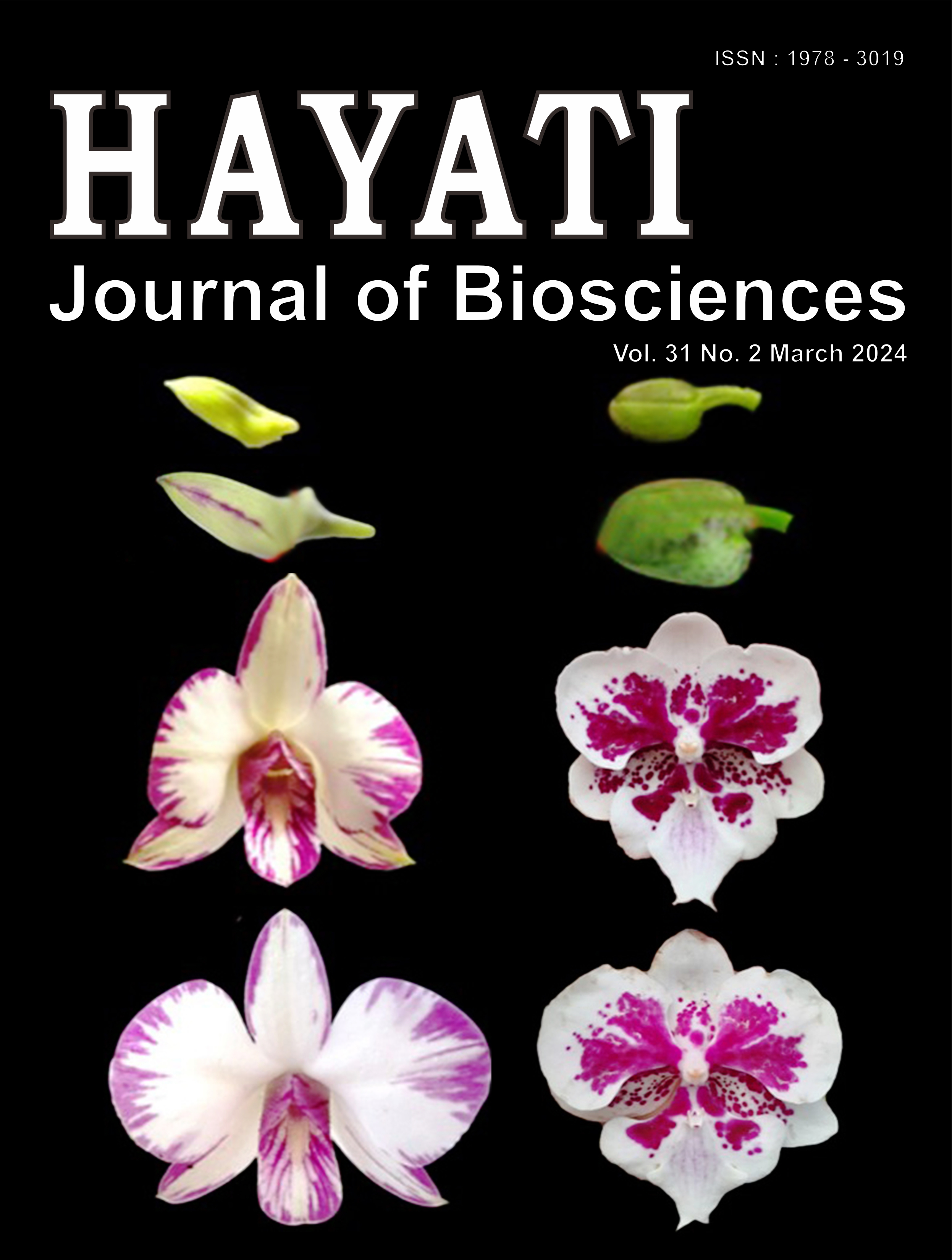Prospects of Indigenous Bacillus subtilis Strain LS9.1 as a Potential Biocontrol Agent against Aedes aegypti Larvae
Abstract
Biocontrol is one way that can be developed to overcome public health and agricultural problems. Biocontrol agents could be a microorganism, for example, from the Bacillus group. This study aims to determine the larvicidal toxicity of the Bacillus subtilis strain LS9.1 against Aedes aegypti larvae. The mode of action of the isolate caused larval death, which was detected with parasporal inclusions and secondary metabolites. Larvicidal toxicity with the bioassay method. Parasporal inclusion proteins were detected with the SDS-PAGE method. The Cry toxin coding gene with the PCR method and cell ultrastructure with transmission and scanning electron microscopy (TEM and SEM). The action of secondary metabolites was detected with hemolytic activity test. The isolate high toxicity to A. aegypti larvae. Parasporal inclusion proteins with molecular weights ranging from 72-7 kDa and the gene encoding a protein toxin in size 300 bp. The TEM and SEM results did not Cry-IV toxin. The hemolytic activity test showed a positive reaction correlated with biosurfactant production. Based on this study, the death of larvae is probably caused by secondary metabolites produced by Bacillus subtilis strain LS9.1. Thus, this isolate has the prospect of being an environmentally friendly biocontrol agent to disease vectors and insect pests.
Downloads
Copyright (c) 2023 Salamun Salamun, Ni'matuzahroh Ni'matuzahroh, Fatimah Fatimah, Tri Nurhariyati, Agus Supriyanto, Izdihar Tsana, Farah Aisyah Nafidiastri

This work is licensed under a Creative Commons Attribution-NonCommercial 4.0 International License.
HAYATI J Biosci is an open access journal and the article's license is CC-BY-NC. This license lets others distribute, remix, tweak, and build upon author's work, as long as they credit the original creation. Authors retain copyright and grant the journal/publisher non exclusive publishing rights with the work simultaneously licensed under a https://creativecommons.org/

























.png) IPB University
IPB University Department of Biology
Department of Biology The Indonesian Biological Society
The Indonesian Biological Society 

